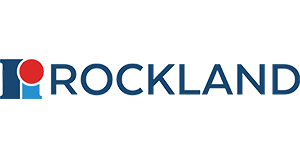Beta Galactosidase
Beta Galactosidase
SKU
ROC0000-17
Packaging Unit
1 mg
Manufacturer
Rockland
Availability:
loading...
Price is loading...
Application Note: Beta Galactosidase is used as a control in beta-galactosidase based immunological assays.
Concentration Value: 1.0 mg/mL
General Disclaimer Note: This product is for research use only and is not intended for therapeutic or diagnostic applications. Please contact a technical service representative for more information. All products of animal origin manufactured by Rockland Immunochemicals are derived from starting materials of North American origin. Collection was performed in United States Department of Agriculture (USDA) inspected facilities and all materials have been inspected and certified to be free of disease and suitable for exportation. All properties listed are typical characteristics and are not specifications. All suggestions and data are offered in good faith but without guarantee as conditions and methods of use of our products are beyond our control. All claims must be made within 30 days following the date of delivery. The prospective user must determine the suitability of our materials before adopting them on a commercial scale. Suggested uses of our products are not recommendations to use our products in violation of any patent or as a license under any patent of Rockland Immunochemicals, Inc. If you require a commercial license to use this material and do not have one, then return this material, unopened to: Rockland Inc., P.O. BOX 5199, Limerick, Pennsylvania, USA.
Physical State: Liquid (sterile filtered)
Purity and Specificity: Beta Galactosidase was prepared from chromatographically pure beta-galactosidase (E.coli).
Background: β-galactosidase, also called beta-gal or β-gal, is a hydrolase enzyme that catalyzes the hydrolysis of β-galactosides into monosaccharides. Substrates of different β-galactosidases include ganglioside GM1, lactosylceramides, lactose, and various glycoproteins. Lactase is often confused as an alternative name for β-galactosidase, but it is actually simply a sub-class of β-galactosidase. β-galactosidase is an exoglycosidase which hydrolyzes the β-glycosidic bond formed between a galactose and its organic moiety. It may also cleave fucosides and arabinosides but with much lower efficiency. It is an essential enzyme in the human body, deficiencies in the protein can result in galactosialidosis or Morquio B syndrome. In E. coli, the gene of β-galactosidase, the lacZ gene, is present as part of the inducible system lac operon which is activated in the presence of lactose when glucose level is low. It is commonly used in molecular biology as a reporter marker to monitor gene expression. It also exhibits a phenomenon called α-complementation which forms the basis for the blue/white screening of recombinant clones. This enzyme can be split in two peptides, LacZα and LacZΩ, neither of which is active by itself but when both are present together, spontaneously reassemble into a functional enzyme. This property is exploited in many cloning vectors where the presence of the lacZα gene in a plasmid can complement in trans another mutant gene encoding the LacZΩ in specific laboratory strains of E. coli. However, when DNA fragments are inserted in the vector, the production of LacZα is disrupted, the cells therefore show no β-galactosidase activity. The presence or absence of an active β-galactosidase may be detected by X-gal, which produces a characteristic blue dye when cleaved by β-galactosidase, thereby providing an easy means of distinguishing the presence or absence of cloned product in a plasmid.
Low Endotoxin: No
Other: User Optimized
Concentration Value: 1.0 mg/mL
General Disclaimer Note: This product is for research use only and is not intended for therapeutic or diagnostic applications. Please contact a technical service representative for more information. All products of animal origin manufactured by Rockland Immunochemicals are derived from starting materials of North American origin. Collection was performed in United States Department of Agriculture (USDA) inspected facilities and all materials have been inspected and certified to be free of disease and suitable for exportation. All properties listed are typical characteristics and are not specifications. All suggestions and data are offered in good faith but without guarantee as conditions and methods of use of our products are beyond our control. All claims must be made within 30 days following the date of delivery. The prospective user must determine the suitability of our materials before adopting them on a commercial scale. Suggested uses of our products are not recommendations to use our products in violation of any patent or as a license under any patent of Rockland Immunochemicals, Inc. If you require a commercial license to use this material and do not have one, then return this material, unopened to: Rockland Inc., P.O. BOX 5199, Limerick, Pennsylvania, USA.
Physical State: Liquid (sterile filtered)
Purity and Specificity: Beta Galactosidase was prepared from chromatographically pure beta-galactosidase (E.coli).
Background: β-galactosidase, also called beta-gal or β-gal, is a hydrolase enzyme that catalyzes the hydrolysis of β-galactosides into monosaccharides. Substrates of different β-galactosidases include ganglioside GM1, lactosylceramides, lactose, and various glycoproteins. Lactase is often confused as an alternative name for β-galactosidase, but it is actually simply a sub-class of β-galactosidase. β-galactosidase is an exoglycosidase which hydrolyzes the β-glycosidic bond formed between a galactose and its organic moiety. It may also cleave fucosides and arabinosides but with much lower efficiency. It is an essential enzyme in the human body, deficiencies in the protein can result in galactosialidosis or Morquio B syndrome. In E. coli, the gene of β-galactosidase, the lacZ gene, is present as part of the inducible system lac operon which is activated in the presence of lactose when glucose level is low. It is commonly used in molecular biology as a reporter marker to monitor gene expression. It also exhibits a phenomenon called α-complementation which forms the basis for the blue/white screening of recombinant clones. This enzyme can be split in two peptides, LacZα and LacZΩ, neither of which is active by itself but when both are present together, spontaneously reassemble into a functional enzyme. This property is exploited in many cloning vectors where the presence of the lacZα gene in a plasmid can complement in trans another mutant gene encoding the LacZΩ in specific laboratory strains of E. coli. However, when DNA fragments are inserted in the vector, the production of LacZα is disrupted, the cells therefore show no β-galactosidase activity. The presence or absence of an active β-galactosidase may be detected by X-gal, which produces a characteristic blue dye when cleaved by β-galactosidase, thereby providing an easy means of distinguishing the presence or absence of cloned product in a plasmid.
Low Endotoxin: No
Other: User Optimized
| SKU | ROC0000-17 |
|---|---|
| Manufacturer | Rockland |
| Manufacturer SKU | 0000-17 |
| Package Unit | 1 mg |
| Quantity Unit | STK |
| Conjugate | Unconjugated |
| Product information (PDF) | Download |
| MSDS (PDF) |
|

 Deutsch
Deutsch










